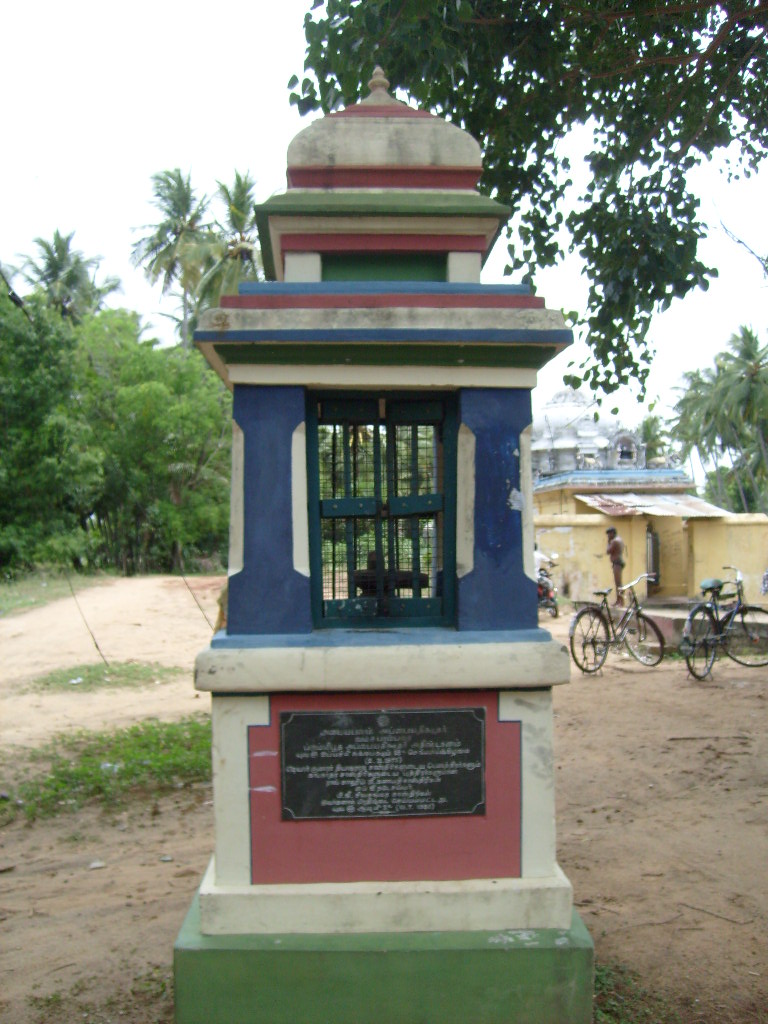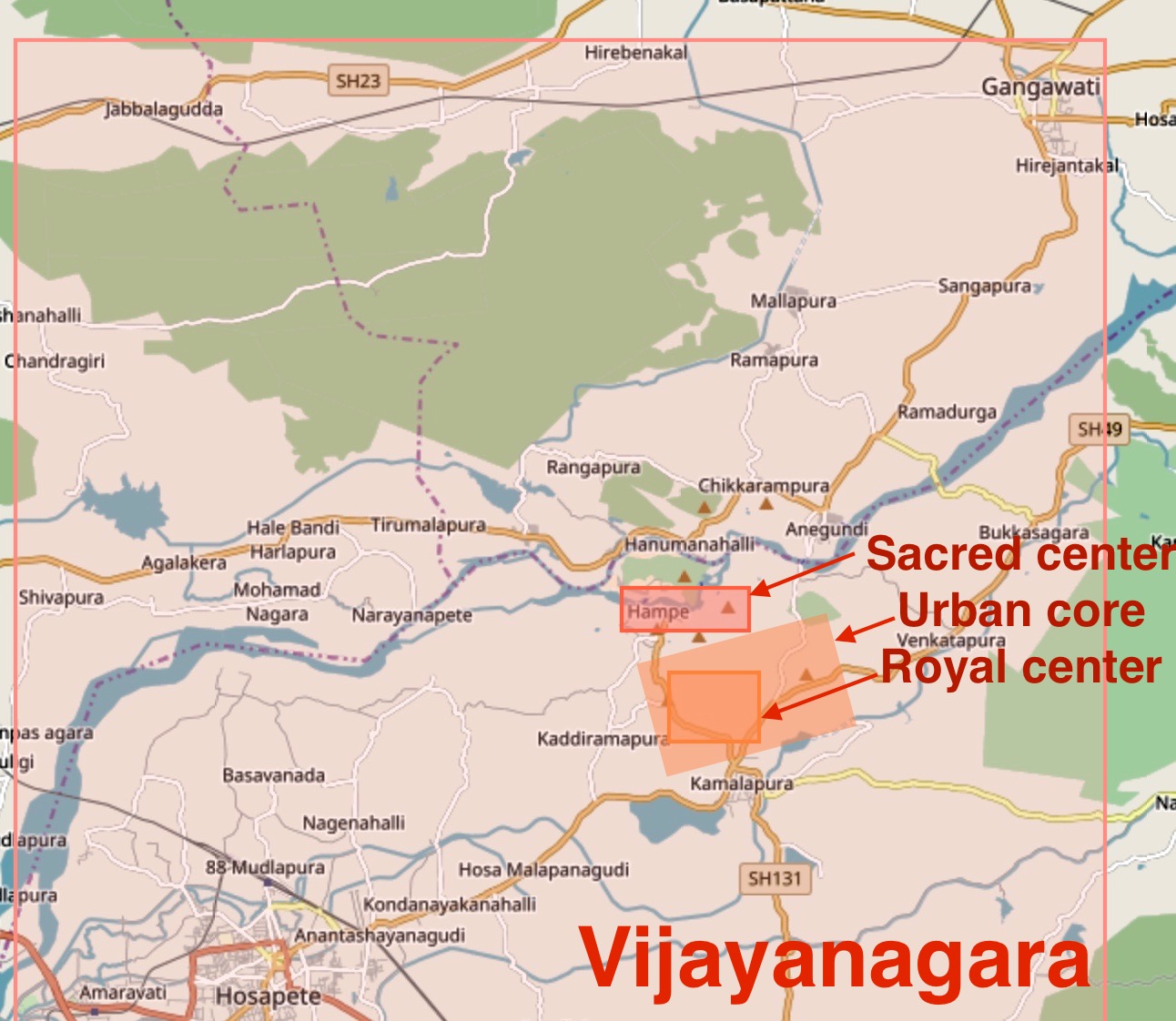|
Appayya Dīkṣita
Appayya Dikshita ( IAST ', often "Dikshitar"), 1520–1593 CE, was a performer of yajñas as well as an expositor and practitioner of the Advaita Vedanta school of Hindu philosophy but with a focus on Shiva or Shiva Advaita. Life Appayya Dikshitar was born as Vinayaka Subramanian in Adayapalam, near Arani in the Tiruvannamalai district, in the Krishna Paksha of the Kanya month of Pramateecha Varsha under the Uttara Proushthapada constellation of the Hindu calendar. He belonged to the Vadadesa Vadama subsect . His father’s name was Rangarajadhwari. Appaya had the name Vinayaka Subramanya after the Namakarana or naming ceremony took place. Acharya Dikshitar or Acchan Dikshitar was the younger brother of Appayya. Appayya studied the Hindu scriptures under his Guru, Rama Kavi. He completed the fourteen Vidyas at his young age. Dikshitar travelled widely, entering into philosophical disputations and controversies in many centers of learning. He had the rare good fortune ... [...More Info...] [...Related Items...] OR: [Wikipedia] [Google] [Baidu] |
IAST
The International Alphabet of Sanskrit Transliteration (IAST) is a transliteration scheme that allows the lossless romanisation of Indic scripts as employed by Sanskrit and related Indic languages. It is based on a scheme that emerged during the nineteenth century from suggestions by Charles Trevelyan, William Jones, Monier Monier-Williams and other scholars, and formalised by the Transliteration Committee of the Geneva Oriental Congress, in September 1894. IAST makes it possible for the reader to read the Indic text unambiguously, exactly as if it were in the original Indic script. It is this faithfulness to the original scripts that accounts for its continuing popularity amongst scholars. Usage Scholars commonly use IAST in publications that cite textual material in Sanskrit, Pāḷi and other classical Indian languages. IAST is also used for major e-text repositories such as SARIT, Muktabodha, GRETIL, and sanskritdocuments.org. The IAST scheme represents more than a ... [...More Info...] [...Related Items...] OR: [Wikipedia] [Google] [Baidu] |
Vijayanagara
Vijayanagara () was the capital city of the historic Vijayanagara Empire. Located on the banks of the Tungabhadra River, it spread over a large area and included the modern era Group of Monuments at Hampi site in Vijayanagara district, Bellary district and others in and around these districts in Karnataka, India. A part of Vijayanagara ruins known as Hampi has been designated as a UNESCO world heritage site. Vijayanagara is in the eastern part of central Karnataka, close to the Andhra Pradesh border.Vijayanagara Encyclopaedia Britannica Hampi is an ancient human settlement, mentioned in Hindu texts and has pre-Vijayanagara temples and monuments. In early 14th century, the Deccan region including the dominant Kakatiya Dynasty, Kakatiyas, Yadavas of Devagiri, Seuna Yadavas, Hoysala Empire, Hoysalas and the ... [...More Info...] [...Related Items...] OR: [Wikipedia] [Google] [Baidu] |
Amalananda
Amalananda was a south Indian Sanskrit scholar who lived during the reign of Mahadeva, the Yadava ruler of Devagiri who ruled from 1260 to 1271. Not much is known about his life and background. Anubhavānanda is believed to have been his preceptor. Amalānanda wrote ''Vedānta Kalpatarū'' sometime before 1297. This book is a commentary on '' Bhāmatī '' of Vācaspati Miśra which text in its own turn is a commentary on Sankara's commentary on the Brahma Sutras of Badarayana. His other works are – ''Śastra-darpana'' which is explanations of the Brahma Sutras, and ''Pancapādikā-darpana'' which is a commentary on Padmapādācārya's ''Pancapādika''. The language of these works is chaste and the thought-content is serious. Vācaspati Miśra, the author of ''Bhāmatī'' lived around 841. Appayya Dikshita Appayya Dikshita (IAST ', often "Dikshitar"), 1520–1593 CE, was a performer of yajñas as well as an expositor and practitioner of the Advaita Vedant ... [...More Info...] [...Related Items...] OR: [Wikipedia] [Google] [Baidu] |
Madhvacharya
Madhvacharya (; ; CE 1199-1278 or CE 1238–1317), sometimes Anglicisation, anglicised as Madhva Acharya, and also known as Purna Prajna () and Ānanda Tīrtha, was an Indian philosopher, theologian and the chief proponent of the ''Dvaita'' (dualism) school of Vedanta. Madhva called his philosophy ''Dvaita Vedanta, Tattvavāda'' meaning "arguments from a realist viewpoint". Madhvacharya was born on the west coast of Karnataka state in 13th-century India. As a teenager, he became a Sannyasa, Sanyasi (monk) joining Brahma-sampradaya guru Achyutapreksha, of the Ekadandi order. Madhva studied the classics of Hindu philosophy, and wrote commentaries on the Principal Upanishads, the ''Bhagavad Gita'' and the Brahma Sutras (''Prasthanatrayi''), and is credited with thirty seven works in Sanskrit. His writing style was of extreme brevity and condensed expression. His greatest work is considered to be the ''Anuvyakhyana'', a philosophical supplement to his bhasya on the Brahma Sutras ... [...More Info...] [...Related Items...] OR: [Wikipedia] [Google] [Baidu] |
Ramanuja
Ramanuja (Middle Tamil: Rāmāṉujam; Classical Sanskrit: Rāmanuja; 1017 CE – 1137 CE; ; ), also known as Ramanujacharya, was an Indian Hindu philosopher, guru and a social reformer. He is noted to be one of the most important exponents of the Sri Vaishnavism tradition within Hinduism. His philosophical foundations for devotionalism were influential to the Bhakti movement. Ramanuja's guru was Yadava Prakaasa, Yādava Prakāśa, a scholar who according to tradition belonged to the Advaita Vedanta, Advaita Vedānta tradition, but probably was a Bhedabheda scholar. Sri Vaishnava tradition holds that Ramanuja disagreed with his guru and the non-dualistic Advaita Vedānta, and instead followed in the footsteps of Tamil Alvars, Alvārs tradition, the scholars Nathamuni, Nāthamuni and Yamunacharya, Yamunāchārya. Ramanuja is famous as the chief proponent of Vishishtadvaita subschool of Vedanta, Vedānta, and his disciples were likely authors of texts such as the Shatyayaniya Up ... [...More Info...] [...Related Items...] OR: [Wikipedia] [Google] [Baidu] |
Vishnu
Vishnu ( ; , ), also known as Narayana and Hari, is one of the principal deities of Hinduism. He is the supreme being within Vaishnavism, one of the major traditions within contemporary Hinduism. Vishnu is known as "The Preserver" within the Trimurti, the triple deity of supreme divinity that includes Brahma and Shiva.Gavin Flood, An Introduction to Hinduism' (1996), p. 17. In Vaishnavism, Vishnu is the supreme being who creates, protects, and transforms the universe. In the Shaktism tradition, the Goddess, or Adi Shakti, is described as the supreme Para Brahman, yet Vishnu is revered along with Shiva and Brahma. Tridevi is stated to be the energy and creative power (Shakti) of each, with Lakshmi being the equal complementary partner of Vishnu. He is one of the five equivalent deities in Panchayatana puja of the Smarta tradition of Hinduism. According to Vaishnavism, the highest form of Ishvara is with qualities (Saguna), and have certain form, but is limitless, transcend ... [...More Info...] [...Related Items...] OR: [Wikipedia] [Google] [Baidu] |
Vishishtadvaita
Vishishtadvaita (IAST '; sa, विशिष्टाद्वैत) is one of the most popular schools of the Vedanta school of Hindu philosophy. Vedanta literally means the in depth meaning ''of the Vedas.'' ''Vishisht Advaita'' (literally "Advaita means non- Duality") is a non-dualistic school of Vedanta philosophy. It is non-dualism of the qualified whole, in which Brahman alone is seen as the Supreme Reality, but is characterized by multiplicity. It can be described as qualified monism or qualified non-dualism or attributive monism. It is a school of Vedanta philosophy which believes in all diversity subsuming to an underlying unity. Ramanuja, the 11–12th century philosopher and the main proponent of Vishishtadvaita philosophy contends that the Prasthanatrayi ("The three courses"), namely the Upanishads, the Bhagavad Gita, and the Brahma Sutras are to be interpreted in a way that shows this unity in diversity, for any other way would violate their consistency. Vedanta ... [...More Info...] [...Related Items...] OR: [Wikipedia] [Google] [Baidu] |




